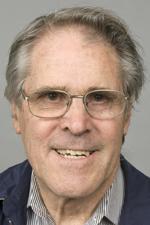There is a great interest in understanding processes occurring in the ground and excited states of both atoms and molecules. Professor Baird's research in chemical physics involves studies of energy and state transfer collisions, as well as measurement of energy level separations, in simple molecular and atomic species. For example, in studying the resonance fluorescence from atomic thallium it has been possible to measure the free atomic lifetime, radiation trapping (coherent narrowing), the resonance collision cross sections caused by rare gas thallium collisions. Also in these studies there is evidence of multiple collisions in the excited state-ground state atoms.
There is a great interest in understanding processes occurring in the ground and excited states of both atoms and molecules. Professor Baird's research in chemical physics involves studies of energy and state transfer collisions, as well as measurement of energy level separations, in simple molecular and atomic species. For example, in studying the resonance fluorescence from atomic thallium it has been possible to measure the free atomic lifetime, radiation trapping (coherent narrowing), the resonance collision cross sections caused by rare gas thallium collisions. Also in these studies there is evidence of multiple collisions in the excited state-ground state atoms. Of interest too are experiments testing the fundamentals of atomic and molecular physics. Research on atomic hydrogen a few years ago played a role in determining the viability of quantum electrodynamics as a correct theory for the electromagnetic interaction to distances on the order of 1013 cm. Current interest is with studies of spin polarized hydrogen at low temperatures. Theoretical work on this system includes studies of collisions at very low energies, calculation of the spin-exchange cross section, nuclear spin relaxation times, and modeling of two dimensional scattering and spin-exchange scattering. Research work on molecular species has involved experimental measurements of fine and hyperfine structure, and theoretical studies of the spin-orbit and spin-dipolar interactions in molecules. Of current interest are efforts to excite molecules to energy levels just below and above the dissociation limit, and to theoretically calculate their positions. The experimental techniques used include optical pumping, coherent excitation, and radio frequencies, as well as digital data handling methods.
Infrared Emission Spectra in a Plasma: Stark-Broadened Neutral Oxygen in the 7.5 m, J. C. Baird and S. Alexiou, Phys. Rev. Lett. A 42, 7413 (1990).
Stark Broadening in High Angular Momentum States of Atomic Oxygen: Application to Transitions Between 5.5 to 8.0 m, J. C. Baird and S. Alexiou, Chemical Physics Letters, 152, 124, (1988).i
Potential Scattering and Spin-Exchange Cross Sections in Atomic Hydrogen at Very Low Energies, N. Koyama and J. C. Baird, J. Phys. Soc. Japan, 55, 801 (1986).
Medium-Wavelength Infrared Emission From a Laser-Produced Oxygen Plasma: Observations of O1 6H 3,5H at 7.5 m, J. B. Lurie and J. C. Baird, Chem. Phys. Lett., 125, 389 (1986).
Fluctuation of the Deuteron Pair Distribution Function in a Charged Particle System and the Fusion Cross Section in Solids, G. Ropke and J. C. Baird, submitted to Phys. Rev. Lett.

